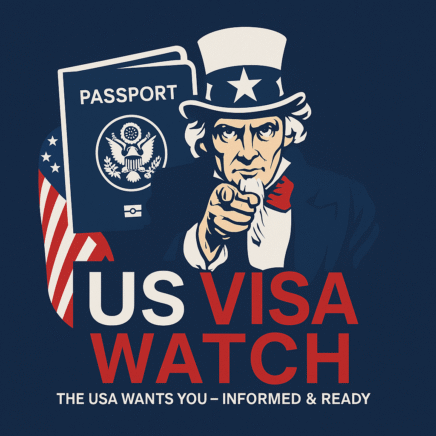US Visa Requirements in 2025 – Complete Guide
Introduction
The United States remains a top destination for travelers, students, professionals, and families from around the world. Every year, millions of individuals apply for US visas for a variety of purposes. Navigating the visa system can be complex, but understanding the foundational requirements will increase your chances of a successful application. This in-depth guide is designed to walk you through everything you need to know about US visa requirements in 2025, from eligibility and documentation to interviews and updates.
Types of US Visas
US visas are broadly classified into two main categories: non-immigrant and immigrant visas. Non-immigrant visas are for individuals who plan to stay in the US temporarily, while immigrant visas are for those seeking permanent residence. Some of the most popular visa types include:
- B1/B2 Visa: Used for business trips, vacations, and medical treatment.
- F1 Visa: For students pursuing academic studies or language training programs.
- H1B Visa: For highly skilled professionals with specialized knowledge.
- L1 Visa: Allows companies to transfer employees from overseas offices to US branches.
- J1 Visa: Used for educational and cultural exchange programs, including internships and research.
Each of these visa categories has unique requirements, processes, and benefits. Choosing the correct visa type is the first critical step in the application process.
General Requirements for a US Visa
Although each visa category has its own set of rules, several general requirements apply across the board:
- A passport valid for at least six months beyond the intended stay in the US
- A completed DS-160 form submitted online
- Payment of the visa application fee (non-refundable)
- Photograph in accordance with US visa photo standards
- Supporting documentation such as invitation letters, financial records, or acceptance letters
Applicants must also demonstrate strong ties to their home country, such as employment, property ownership, or family, to assure consular officers of their intent to return after the visit.
Documentation by Visa Type
Depending on the type of visa you apply for, documentation will vary. Here's an overview of what is typically required:
- B1/B2: Letter of invitation (if applicable), hotel bookings, bank statements, proof of employment
- F1: I-20 form from a certified US institution, proof of financial means, transcripts, and standardized test scores
- H1B: Approved Labor Condition Application (LCA), job offer letter, proof of education and experience
- L1: Organizational charts, proof of employment history with the parent company, and corporate documentation
How to Apply for a US Visa
The US visa application process follows a structured sequence. While the exact steps can vary slightly by country, the typical procedure is:
- Identify the appropriate visa category
- Complete and submit the DS-160 form online
- Pay the required visa application fee
- Create a profile on the US embassy’s visa appointment system
- Schedule and attend a visa interview at your nearest embassy or consulate
Applicants should prepare thoroughly for the visa interview, ensuring all supporting documents are neatly organized and readily accessible.
Visa Interview Tips
Consular officers use the visa interview to assess the credibility of your application. To succeed, follow these tips:
- Be clear, honest, and concise in your responses
- Dress appropriately and arrive early
- Bring original copies of all documents
- Practice answering common questions such as your purpose of travel, ties to home country, and travel history
Confidence and preparation go a long way in leaving a positive impression during your interview.
Visa Denials and What to Do Next
Visa denials can occur for several reasons, with the most common being under Section 214(b) of the Immigration and Nationality Act. This means the applicant failed to demonstrate sufficient ties to their home country. Other reasons include incomplete documentation, prior immigration violations, or suspicious travel history.
If your visa is denied, you can reapply. However, you should only do so after addressing the reasons for the initial denial and collecting stronger documentation to support your case.
Recent Changes in 2025
In 2025, the US Department of State has introduced several updates to streamline the visa application process. These include:
- Expanded availability of virtual interviews in select countries
- Digitized submission of supporting documents prior to appointments
- Improved case status tracking through embassy portals
- Faster turnaround time for processing student and work visas
Applicants are advised to frequently check the website of the US embassy or consulate in their country for the latest updates.
Conclusion
Understanding and fulfilling US visa requirements in 2025 is essential for travelers and migrants alike. From selecting the correct visa type to preparing documentation and passing the visa interview, each step demands careful attention. By staying informed and organized, applicants can navigate the process more confidently and increase their chances of success.
For the most accurate and up-to-date information, always refer to the official US Department of State and embassy websites. This guide serves as a comprehensive starting point, whether you're planning a vacation, pursuing academic dreams, or seeking new professional opportunities in the United States.
